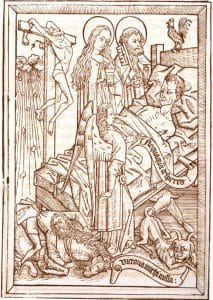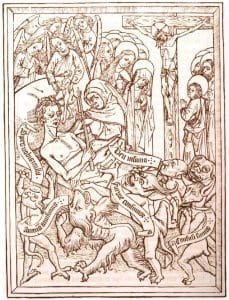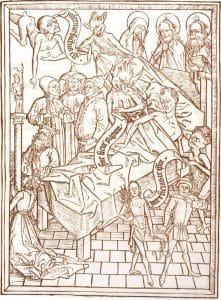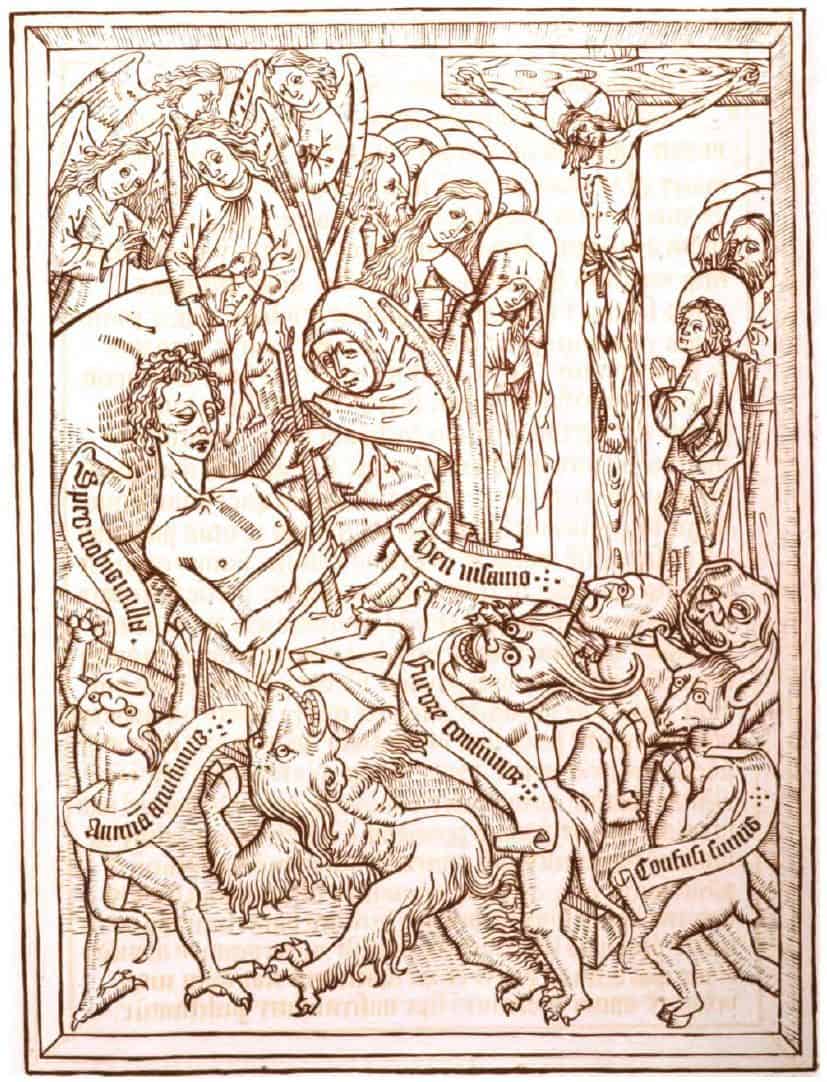
Ars moriendi. [Cologne, Heinrich Quentell, c. 1495]
Although the author of Ars moriendi is not known, the book is believed to have been written in Southern Germany at the time of the Council of Constance (1414-1418).
Ars moriendi, or The art of dying, was intended to instruct the reader on the proper modes of behavior when facing death. The book was one result of the Church’s effort to educate the laity in the fundamentals of Christianity during the late medieval period. Gerson’s Opus tripartitum is the source of much of the work, with other material being drawn from the Bible, liturgies, and devotional and doctrinal literature of the period.
Ars moriendi is divided into six parts:
- a selection of quotations on death from authoritative Christian sources;
- advice to the dying on how to overcome faithlessness, despair, impatience, pride, worldliness, and other temptations;
- a series of catechetical questions whose correct answers lead to salvation;
- instructions and prayers for imitating the dying Christ;
- practical advice for the dying individual; and,
- prayers to be said by those attending the dying.
The title page scene is a well known and frequently studied woodcut. Designed by Heinrich Quentell, Cologne’s most successful and prolific printer of the late fifteenth century, it depicts St. Thomas instructing two children who are seated before him.
You may view this book in the John Martin Rare Book Room, Hardin Library for the Health Sciences. Make a gift to the Hardin Library for the Health Sciences by donating online or setting up a recurring gift with The University of Iowa Foundation.



